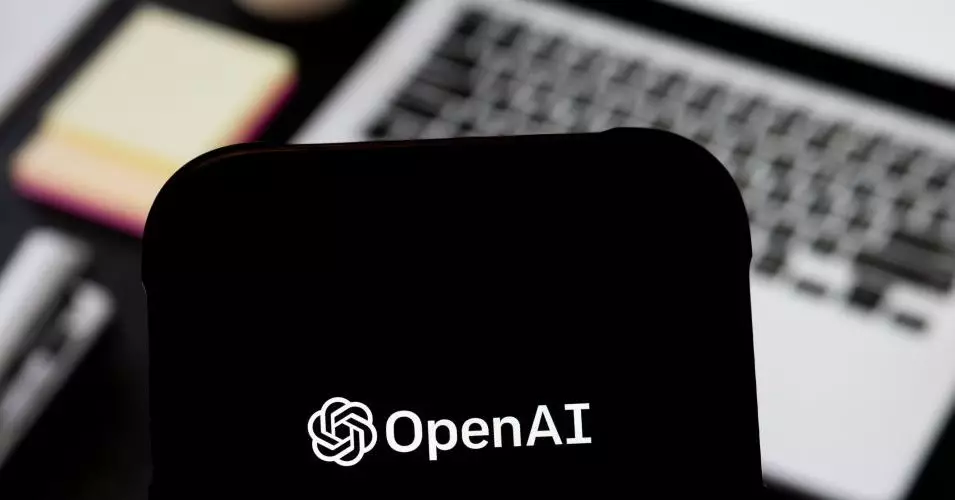In a significant twist in the field of artificial intelligence, Sam Altman, the CEO of OpenAI, has triggered excitement across the tech community with the announcement of an incoming open-weight language model. This model, scheduled for release in the upcoming months, is seen as a pivotal response to the ascendant R1 model from Chinese tech firm DeepSeek and Meta’s Llama models. Altman’s assertion that OpenAI is pivoting towards open models encapsulates a critical realization: the company must adapt to maintain its relevance in a rapidly evolving landscape. Altman’s words carry weight, as he suggested they’ve long contemplated this shift, now determined by a palpable sense of urgency.
A New Era of Open Models
The release of this open-weight model does not merely represent a strategic shift; it signifies an ideological change as well. Altman has acknowledged that OpenAI found itself “on the wrong side of history” when it came to the open models’ paradigm. The implications are vast—open-weight models democratize AI technology and allow a broader range of individuals and organizations to leverage AI’s transformative capabilities without being stifled by restrictive licensing or costs.
With DeepSeek’s R1 model gaining traction by being trained at a fraction of the cost of traditional AI models, OpenAI’s entrance into this space looks to bolster its competitive standing. Altman also hinted at the potential for reusable, tailored AI for specific applications, thus enhancing the user experience and ensuring the technology can ethically adapt to sensitive contexts. This is a strategic endeavor that could redefine the dynamics of the AI landscape, ensuring users have more control and flexibility.
Community Response and Reactions
The announcement has elicited enthusiastic responses from industry stakeholders. Notably, Clement Delangue, co-founder and CEO of Hugging Face, heralded the development as a breakthrough that would amplify the power and reach of open-weight models. The resonance of this remark stems from a broader realization within the AI community concerning the innovative potential unlocked by freely accessible resources. The narrative showcases a shift in acknowledgment that collaboration and openness fuel progress, not just proprietary advancements.
OpenAI is strategically positioning itself alongside other key players to harness this momentum. The invitation to developers for early access to the upcoming model underlines OpenAI’s commitment to community engagement. By hosting interactive events featuring prototypes, the company seeks to iterate quickly based on user feedback, ultimately crafting a product that meets real-world needs.
Safety and Concerns in the Open-Weight Landscape
Despite the enthusiasm, the response does not ignore the significant concerns surrounding open-weight models. Researchers, including OpenAI’s Johannes Heidecke, have voiced the need for thorough testing to prevent misuse. The dark possibilities are indeed frightening; the proliferation of open-weight models opens doors for nefarious actors to craft weapons or exploit vulnerabilities. Balancing innovation with safety remains a critical challenge—one that OpenAI acknowledges through their Preparedness Framework, which provides a structure for risk evaluation before any release.
This tension—between innovation and safety—captures the ongoing internal and external dialogues within the AI sector. OpenAI must reassure stakeholders that integrity and security will guide this release. The movement towards open access cannot come at the expense of societal safety.
Comparative Landscape of Open-Weight AI Initiatives
The competitive landscape is evolving rapidly, accentuated by Meta’s early push with the Llama model in July 2023. Meta’s approach has drawn both attention and criticism for lacking transparency, including undisclosed training data and restrictive licensing. Where Meta’s Llama might falter on transparency, the launch of OpenAI’s open-weight model is poised to emphasize openness and encourage more responsible experimentation in AI.
As other organizations scramble to harness the power of open-weight models, clarity in communication regarding their frameworks becomes a pivotal task for OpenAI. The ability to garner trust while offering innovative technologies could reshape public perceptions of AI from being seen strictly as a tool of profit into one of shared advancement.
The imminent release of OpenAI’s open-weight model represents a beacon of hope and transformation in AI. Positioned to potentially democratize technology while navigating the complex waters of ethical responsibility, this momentous initiative illustrates a significant point of no return in the evolution of artificial intelligence. The stage is set for great progress and formidable challenges alike.


Leave a Reply